Parallel analysis of RNA ends reveals global microRNA-mediated target RNA cleavage in maize
- PMID: 35962593
- PMCID: PMC9804894
- DOI: 10.1111/tpj.15943
Parallel analysis of RNA ends reveals global microRNA-mediated target RNA cleavage in maize
Abstract
MicroRNAs (miRNAs) are endogenous 20-24-nucleotide non-coding RNAs that play important regulatory roles in many biological processes in eukaryotes. miRNAs modulate the expression of target genes at the post-transcriptional level by transcript cleavage or translational inhibition. The identification of miRNA target genes has been extensively investigated in Arabidopsis and rice, but an in-depth global analysis of miRNA-mediated target regulation is still lacking in maize. Here, we report a transcriptome-wide identification of miRNA targets by analyzing parallel analysis of RNA ends (PARE) datasets derived from nine different tissues at five developmental stages of the maize (Zea mays L.) B73 cultivar. In total, 246 targets corresponding to 60 miRNAs from 25 families were identified, including transcription factors and other genes. In addition, PARE analysis revealed that miRNAs guide specific target transcript cleavage in a tissue-preferential manner. Primary transcripts of MIR159c and MIR169e were found to be cleaved by mature miR159 and miR169, respectively, indicating a negative-feedback regulatory mechanism in miRNA biogenesis. Moreover, several miRNA-target gene pairs involved in seed germination were identified and experimentally validated. Our PARE analyses generated a wide and detailed miRNA-target interaction atlas, which provides a valuable resource for investigating the roles of miRNAs and their targets in maize.
Keywords: PARE; genome-wide; maize; miRNA; targets.
© 2022 The Authors. The Plant Journal published by Society for Experimental Biology and John Wiley & Sons Ltd.
Conflict of interest statement
The authors declare no conflict of interest.
Figures
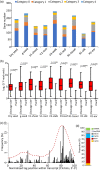
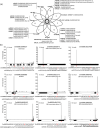
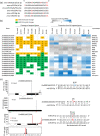
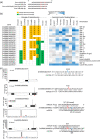

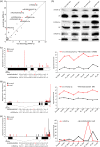
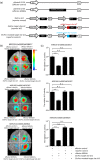
Similar articles
-
Identification of miRNAs and their target genes in developing maize ears by combined small RNA and degradome sequencing.BMC Genomics. 2014 Jan 14;15:25. doi: 10.1186/1471-2164-15-25. BMC Genomics. 2014. PMID: 24422852 Free PMC article.
-
Widespread occurrence of microRNA-mediated target cleavage on membrane-bound polysomes.Genome Biol. 2021 Jan 5;22(1):15. doi: 10.1186/s13059-020-02242-6. Genome Biol. 2021. PMID: 33402203 Free PMC article.
-
Combined small RNA and degradome sequencing reveals novel miRNAs and their targets in response to low nitrate availability in maize.Ann Bot. 2013 Aug;112(3):633-42. doi: 10.1093/aob/mct133. Epub 2013 Jun 19. Ann Bot. 2013. PMID: 23788746 Free PMC article.
-
Conservation and evolution of miRNA regulatory programs in plant development.Curr Opin Plant Biol. 2007 Oct;10(5):503-11. doi: 10.1016/j.pbi.2007.07.004. Epub 2007 Aug 20. Curr Opin Plant Biol. 2007. PMID: 17709279 Free PMC article. Review.
-
MicroRNAs as regulators of bone homeostasis and bone metastasis.Bonekey Rep. 2014 Jul 2;3:549. doi: 10.1038/bonekey.2014.44. eCollection 2014. Bonekey Rep. 2014. PMID: 25120906 Free PMC article. Review.
Cited by
-
miR827 orchestrates the regulation of SPX-MFS1 and SPX-MFS5 with the assistance of lncRNA767 to enhance phosphate starvation tolerance and maize development.Plant Biotechnol J. 2024 Dec;22(12):3489-3504. doi: 10.1111/pbi.14469. Epub 2024 Sep 16. Plant Biotechnol J. 2024. PMID: 39284226 Free PMC article.
-
The rice microRNA159-SPOROCYTELESS EAR2 module regulates starch biosynthesis during pollen development and maintains male fertility.Plant Cell. 2024 Dec 23;37(1):koae324. doi: 10.1093/plcell/koae324. Plant Cell. 2024. PMID: 39665752
-
Multi-Omics Uncover the Mechanism of Wheat under Heavy Metal Stress.Int J Mol Sci. 2022 Dec 15;23(24):15968. doi: 10.3390/ijms232415968. Int J Mol Sci. 2022. PMID: 36555610 Free PMC article. Review.
References
-
- Axtell, M. (2013) Classification and comparison of small RNAs from plants. Annual Review of Plant Biology, 64, 137–159. - PubMed
-
- Brian, D.G. , Ronan, C.O. , Ryan, L. , Mark, A. , Julian, T.F. , Chen, H. et al. (2008) A link between RNA metabolism and silencing affecting Arabidopsis development. Developmental Cell, 14(6), 854–866. - PubMed
Publication types
MeSH terms
Substances
LinkOut - more resources
Full Text Sources
Other Literature Sources

